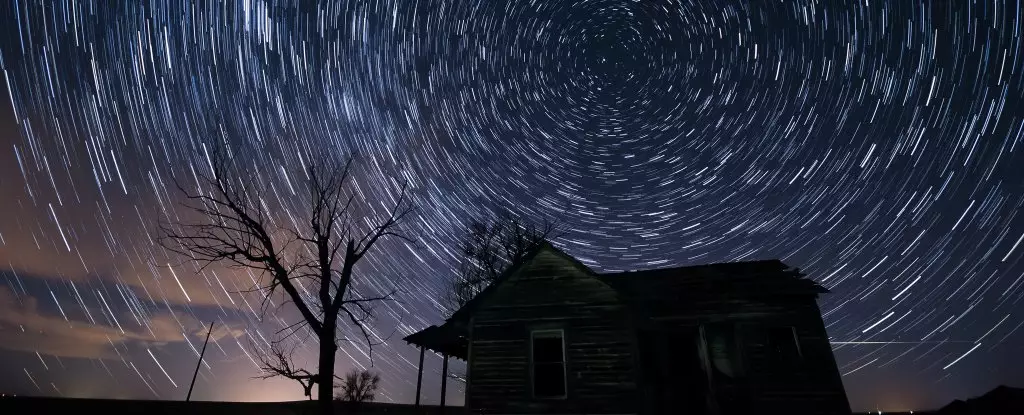The beginning of a new year is often a time of reflection and resolution, but for astronomy enthusiasts, it signifies the commencement of an exhilarating cycle of celestial phenomena. With the dawn of 2025, stargazers are greeted with a range of exciting astronomical events during the first weekend that promises both beauty and intrigue. This article delves into the notable occurrences in January, affirming that winter’s chill only enhances the allure of the night sky.
One of the star attractions this January is undoubtedly the Quadrantid Meteor Shower. Peaking on January 4, observers can expect a peak Zenithal Hourly Rate (ZHR) of approximately 80 meteors, a remarkable count that positions this event among the highlights of the winter skywatching calendar. Although the waxing crescent Moon—27% illuminated—will be present during this event, its brightness is unlikely to significantly obstruct views of the meteors, making 2025 an auspicious year for viewing the “Quads.”
The peak activity of the Quadrantids occurs around 15:00 to 18:00 Universal Time on January 3, which favors observers in the northern Pacific regions. However, for audiences in North America and Europe, the mornings of January 3 and 4 remain promising as well since the peak can be unpredictable. The origins of the Quadrantids are steeped in astronomical history; they represent remnants from the now-defunct constellation of Quadrans Muralis. This blend of historical tidbits and present-day observation adds depth to the astronomical experience.
What makes the Quadrantid shower particularly fascinating is its source—asteroid 2003 EH1—while other meteor showers like the December Geminids stem from unique origins as well, such as rock-comet 3200 Phaethon. Potential meteor watchers should prepare for the possibility of encountering cold winter conditions as they gaze skyward, creating an experience that is as much about braving the elements as it is about witnessing the majestic light displays.
Simultaneously, January 4 also marks a significant astronomical event as Earth reaches perihelion—the closest distance to the Sun in its orbit—measuring approximately 0.98333 AU at 13:00 UTC. Interestingly, this event occurs amidst the Northern Hemisphere’s winter, making it a fascinating paradox. While those in the north bundle up against the winter chill, their counterparts in the Southern Hemisphere are enjoying summer warmth. This is a reminder that our planet’s elliptical orbit and axial tilt create unique seasonal patterns, each with its celestial charm.
This time of year, the Sun appears marginally larger in the sky, an enchanting detail that aficionados may appreciate as they indulge in both solar observation during the day and meteor spotting by night.
Another captivating event on January 4 is the lunar occultation of Saturn around 17:24 UTC. This charm-filled encounter showcases the Moon passing in front of the ringed planet, facilitating a spectacular vanishing act as Saturn disappears behind the dark silhouette of the Moon and reemerges on the sunlit side. This spectacular event will be especially visible in Europe, adding to the seasonal excitement for those hoping to glimpse this less frequent cosmic interplay.
With a visual size of 39” across—including its exquisite rings—Saturn’s brief disappearance will last between 45 seconds to a minute, an ephemeral yet memorable experience for those prepared to watch. Notably, 2025 offers two such occultations of Saturn by the Moon, the second taking place on February 1, serving as a consolation prize for residents in the Canadian Arctic and Alaska.
For those who may not find themselves in ideal viewing conditions, the accessibility of virtual astronomy events has broadened the opportunity to engage with these cosmic spectacles. Astronomer Gianluca Masi will host three virtual sessions focused on the Quadrantid meteors, Saturn’s occultation, and the Moon’s passing near Venus on January 3. This enriching experience allows enthusiasts worldwide to participate in discussions and share insights, forging connections across distances.
Additionally, the Moon’s passage through the night sky during this first weekend aligns it with Saturn and Venus. Observers can delight in the panorama of both bright planets in close proximity, promising an enchanting visual encounter that captivatingly narrates the celestial stories unfolding in the cosmos.
As we usher in 2025, the promise of intriguing celestial events encourages everyone to step outside, embrace the refreshing cold, and embark on a journey of skywatching. Whether you’re armed with a telescope or simply out for a stroll, the universe beckons us all to look up and appreciate the brilliance above us.


Leave a Reply